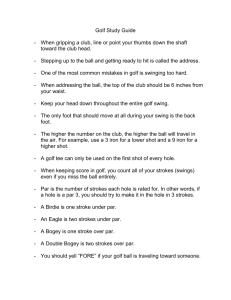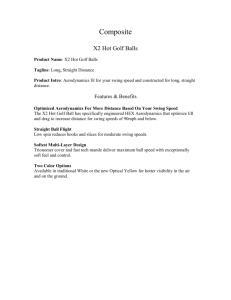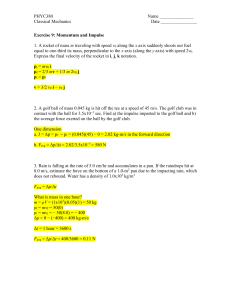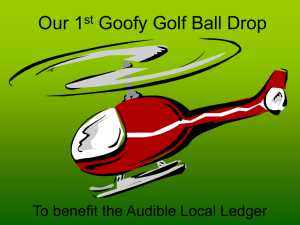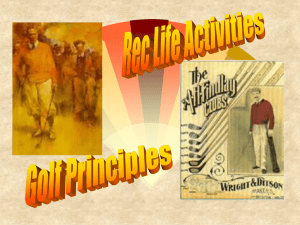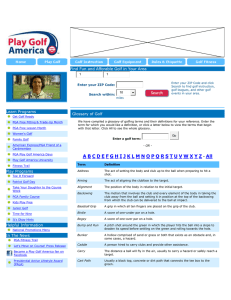Golf - MHS
advertisement
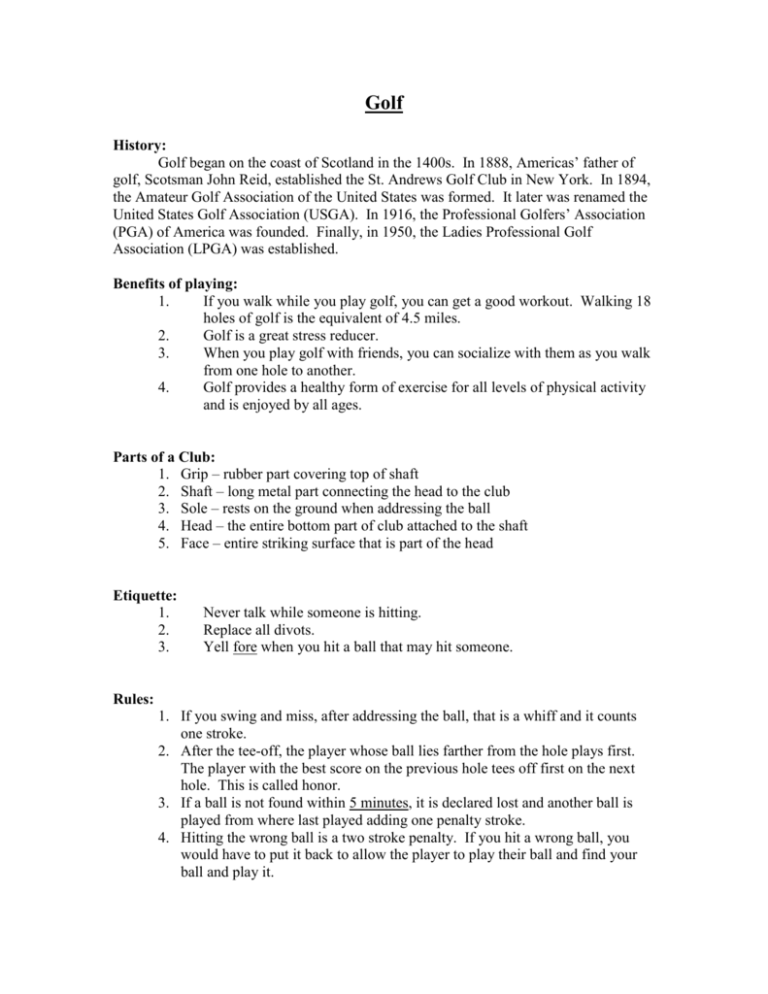
Golf History: Golf began on the coast of Scotland in the 1400s. In 1888, Americas’ father of golf, Scotsman John Reid, established the St. Andrews Golf Club in New York. In 1894, the Amateur Golf Association of the United States was formed. It later was renamed the United States Golf Association (USGA). In 1916, the Professional Golfers’ Association (PGA) of America was founded. Finally, in 1950, the Ladies Professional Golf Association (LPGA) was established. Benefits of playing: 1. If you walk while you play golf, you can get a good workout. Walking 18 holes of golf is the equivalent of 4.5 miles. 2. Golf is a great stress reducer. 3. When you play golf with friends, you can socialize with them as you walk from one hole to another. 4. Golf provides a healthy form of exercise for all levels of physical activity and is enjoyed by all ages. Parts of a Club: 1. Grip – rubber part covering top of shaft 2. Shaft – long metal part connecting the head to the club 3. Sole – rests on the ground when addressing the ball 4. Head – the entire bottom part of club attached to the shaft 5. Face – entire striking surface that is part of the head Etiquette: 1. 2. 3. Never talk while someone is hitting. Replace all divots. Yell fore when you hit a ball that may hit someone. Rules: 1. If you swing and miss, after addressing the ball, that is a whiff and it counts one stroke. 2. After the tee-off, the player whose ball lies farther from the hole plays first. The player with the best score on the previous hole tees off first on the next hole. This is called honor. 3. If a ball is not found within 5 minutes, it is declared lost and another ball is played from where last played adding one penalty stroke. 4. Hitting the wrong ball is a two stroke penalty. If you hit a wrong ball, you would have to put it back to allow the player to play their ball and find your ball and play it. Terminology: Chip-delicate shot close to the green. Address the Ball – Set club on ground behind ball to get ready to play the ball Approach Shot – any shot made with the intention of landing on the green Birdie – one stroke below par Bogey – one stroke over par Divot – piece of turf removed by club in making a shot Eagle – two strokes below par Par – number of strokes intended for a player to play a hole Whiff – missing the ball when attempting to hit it Ace – Hole in one Drive – shot from the tee ground that puts the ball in play on a new hole Grips: Baseball grip – all fingers and thumbs are on the club (least desirable) Interlocking grip – the index ginger of the top hand interlocks with the pinky of the bottom hand; keep the thumbs on the shaft; the palm of the bottom hand covers the thumb of the top hand on the grip. Overlap grip – the pinky of the bottom hand overlaps between the index and middle fingers of the top hand; the palm of the bottom hand covers the thumb of the top hand on the grip. Tips for chip shots (10 – 50 yards): 1. Use a high lofted club 2. Feet close together 3. Head down 4. Keep body as stationary as possible 5. Flex the knees 6. Easy swing 7. Strike the ball with a descending blow 8. Keep the left arm straight 9. Follow through Tips for a full swing: 1. Feet are shoulder-width apart 2. Position the ball in the stance off the forward heel 3. Sole the club (address the ball) 4. Arms should hang from body, not extended 5. Flex the hips and knees 6. Move hands, arms, and shoulders in one motion for the takeaway 7. Extend the target-side arm and bend the rear arm for the backswing 8. Shift weight to the rear leg as the club comes backward. 9. Keep your back to the target at the top of the backswing 10. Start the downswing by shifting the weight of the lower legs forward 11. High follow-through 12. End the swing with your chest toward the target
